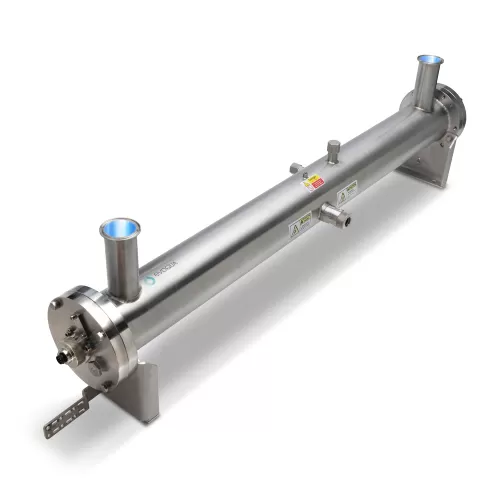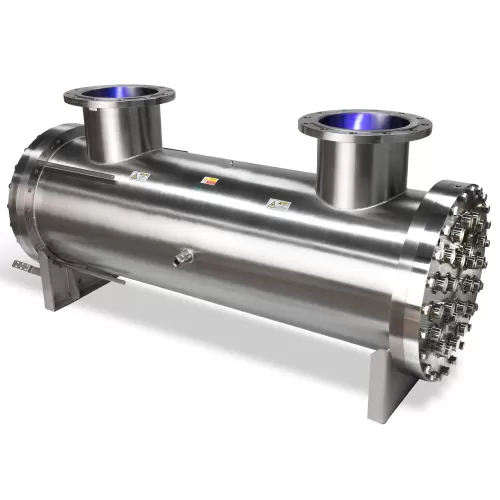The integration of ultraviolet (UV) water disinfection technology

The integration of ultraviolet (UV) water disinfection technology has revolutionized the capabilities and standards within food processing plants, elevating hygiene protocols and ensuring enhanced food safety.
Redefining Food Safety:
Pathogen Control:
UV water disinfection has emerged as a powerful tool in controlling pathogens within food processing facilities. Microorganisms like bacteria, viruses, molds, and yeast, which pose significant risks to food safety, can be effectively neutralized by UV treatment. This ensures that the water used in various stages of food processing remains free from harmful contaminants.
Process Water Purification:
Water plays a critical role in food processing, from cleaning produce to being an ingredient in recipes. UV disinfection systems help purify process water, eliminating the need for chemical disinfectants that might affect food quality or leave residues. The non-chemical nature of UV treatment maintains the integrity and purity of the water used in food production.
Impact on Food Processing Plants:
Improved Hygiene Standards:
The implementation of UV water disinfection elevates hygiene standards within food processing plants. By deploying UV systems at various points in the water treatment process, facilities can ensure that water used for cleaning, rinsing, and even in food formulations meets stringent sanitation requirements.
Enhanced Shelf Life and Quality:
Maintaining the quality and shelf life of food products is crucial. Contaminated water can compromise these aspects. UV disinfection helps ensure that water used in food processing is free from pathogens, reducing the risk of contamination and preserving the freshness and longevity of food items.
Compliance with Regulations:
Regulatory bodies impose strict standards on food safety and sanitation. UV water disinfection assists food processing plants in complying with these regulations by providing an effective and reliable method to control microbial contamination in water systems.
Challenges and Considerations:
System Integration and Maintenance:
Integrating UV disinfection systems into existing water treatment infrastructure requires careful planning. Regular maintenance, including cleaning UV lamps and monitoring system performance, is essential to ensure consistent efficacy.
Comprehensive Coverage:
Achieving comprehensive coverage throughout the entire water supply chain within a food processing plant may require multiple UV treatment points. Identifying critical areas where UV disinfection is most beneficial is crucial.
Future Prospects:
As technology evolves, UV water disinfection in food processing plants is likely to witness advancements aiming for:
- Greater Efficiency: Continued advancements in UV technology aim to enhance system efficiency, reducing energy consumption while maintaining or improving disinfection efficacy.
- Smart Integration: Integration with smart monitoring and control systems to ensure real-time monitoring of water quality and system performance.
- Adaptability and Customization: Tailoring UV systems to suit different food processing needs, optimizing disinfection for various water sources and processing stages.
Conclusion:
The integration of UV water disinfection technology has significantly bolstered the capabilities of food processing plants, ensuring safer and higher-quality food products. By providing a chemical-free, effective solution to control microbial contamination in water, UV technology stands as a cornerstone in advancing food safety standards within the industry. As innovations continue, the future holds promise for even more sophisticated and tailored UV disinfection systems that will further enhance the safety and quality of food production processes.






